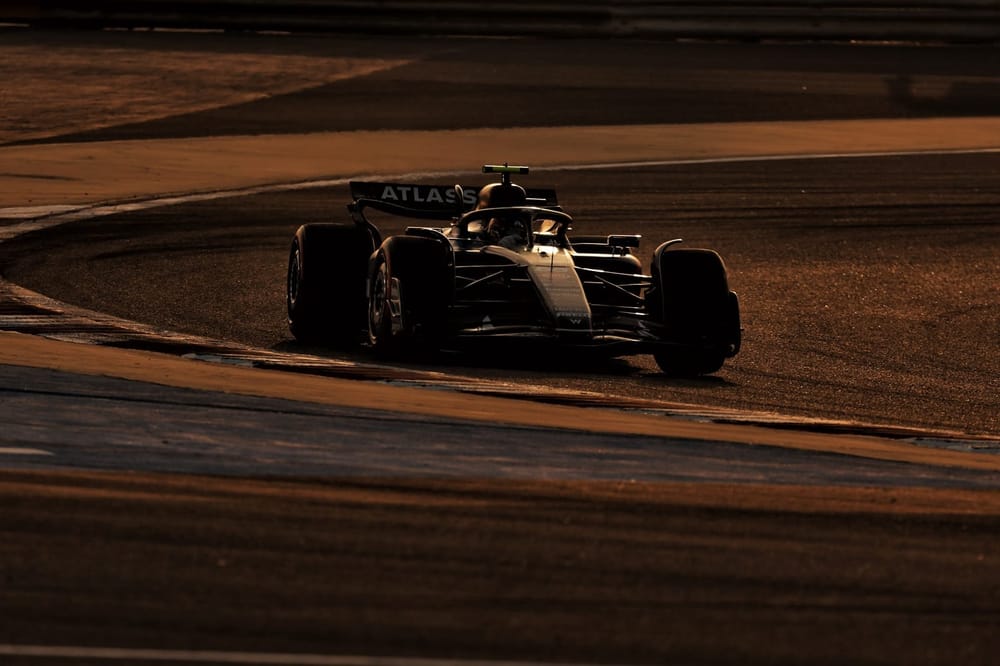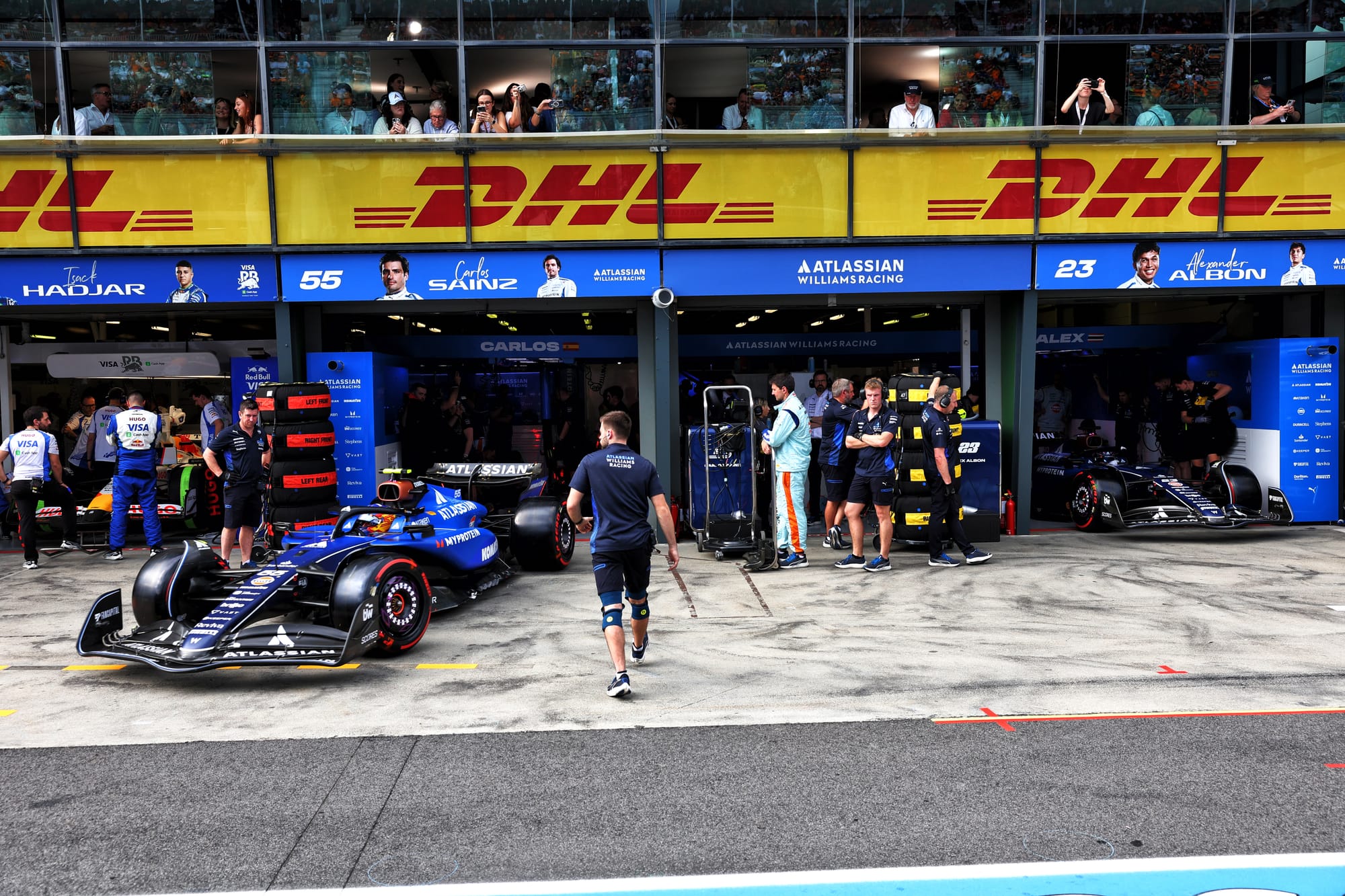Carlos Sainz believes a Williams weakness he has needed to adapt to may have been holding it back in recent years as it is “part of the DNA” of its Formula 1 cars.
After struggling to match Alex Albon in a difficult first two race weekends since joining Williams, Sainz was more competitive in Japan and made it into Q3 in Bahrain, outqualifying Albon for the first time.
This came after recognising some driving traits he has carried over from Ferrari seemed ill-suited to the Williams, and exacerbated some limitations that Albon also felt but was mitigating better.
A concerted effort to adjust to what his new car needs seems to have helped but while Sainz believes this is necessary in the short-term, he has indicated Williams could unlock a lot of potential if the car itself can be better in a specific area.
While Sainz did not want to get into specifics as he admitted “I don't know how much I can go into detail on our balance issues and technicalities”, he did say “it appears a bit more in medium-to-low-speed corners” and that it is present “every lap, it’s part of a characteristic of the car”.
“I'm trying to get my driving, my set-up and my understanding around it, but as a team I think it's fundamental that we improve this because this might be the thing that is holding Williams back in the last few years and we need to altogether understand it, to try and move forward this car and try to apply it to the next set of regulations,” he said.
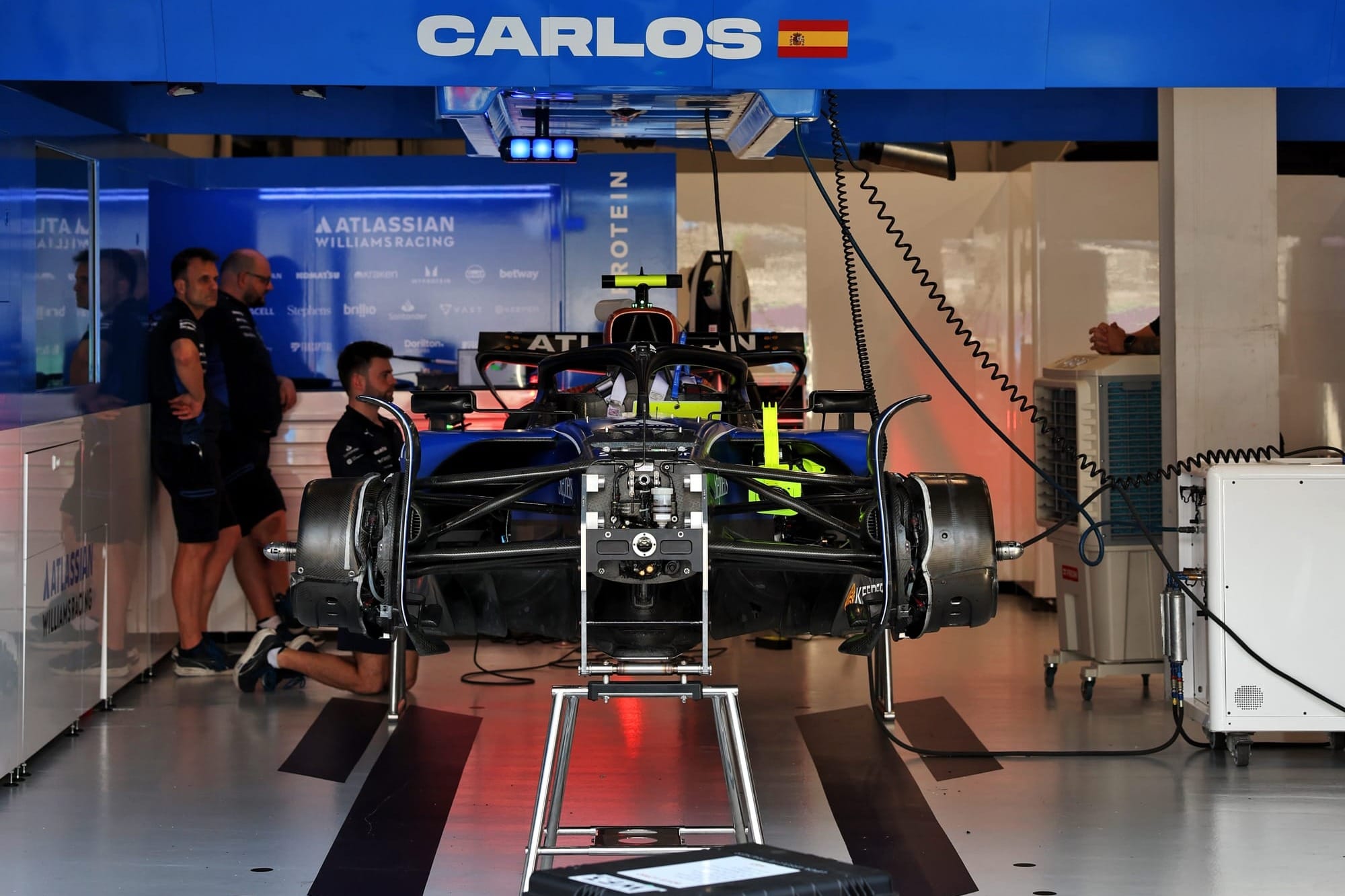
“A lot of work being done back at base, between all of our engineers to try and understand it, all of this.
“Given the car has improved massively compared to last year and it's a much more competitive car, I think it's a much more robust platform, it's just there are things that are maybe part of the DNA of Williams.”
This could relate to a balance problem that became pronounced in the ground-effect era as the Williams struggled with entry instability into corners where brake and steering lock had to be applied together (whereas straightline braking performance has always been strong).
Some progress was said to have been made in this area but that only moved the limitation further round the corner.
Sainz said he has been “very clear” with Williams that if the weakness he has noted is improved there’s “a lot of potential” in the car and what the team is doing and he is “100% sure we can do very big steps forward”.
However, he cautioned it could be something that needs to be baked into how Williams develops future cars, rather than yield a gain this year.
“My experience tells me it takes years of development and of experience and trial and error to know exactly what could potentially be holding it back,” he said.
“But this is something I always find entertaining. Something that motivates me if anything because I feel like if I can help the team to understand that, and spot it in the data, spot it in the windtunnel, spot it in our tools - there's a big step coming whenever we progressively improve it.”
In Bahrain last weekend Williams team boss James Vowles suggested the team was not aware of the severity of the issue before Sainz arrived.
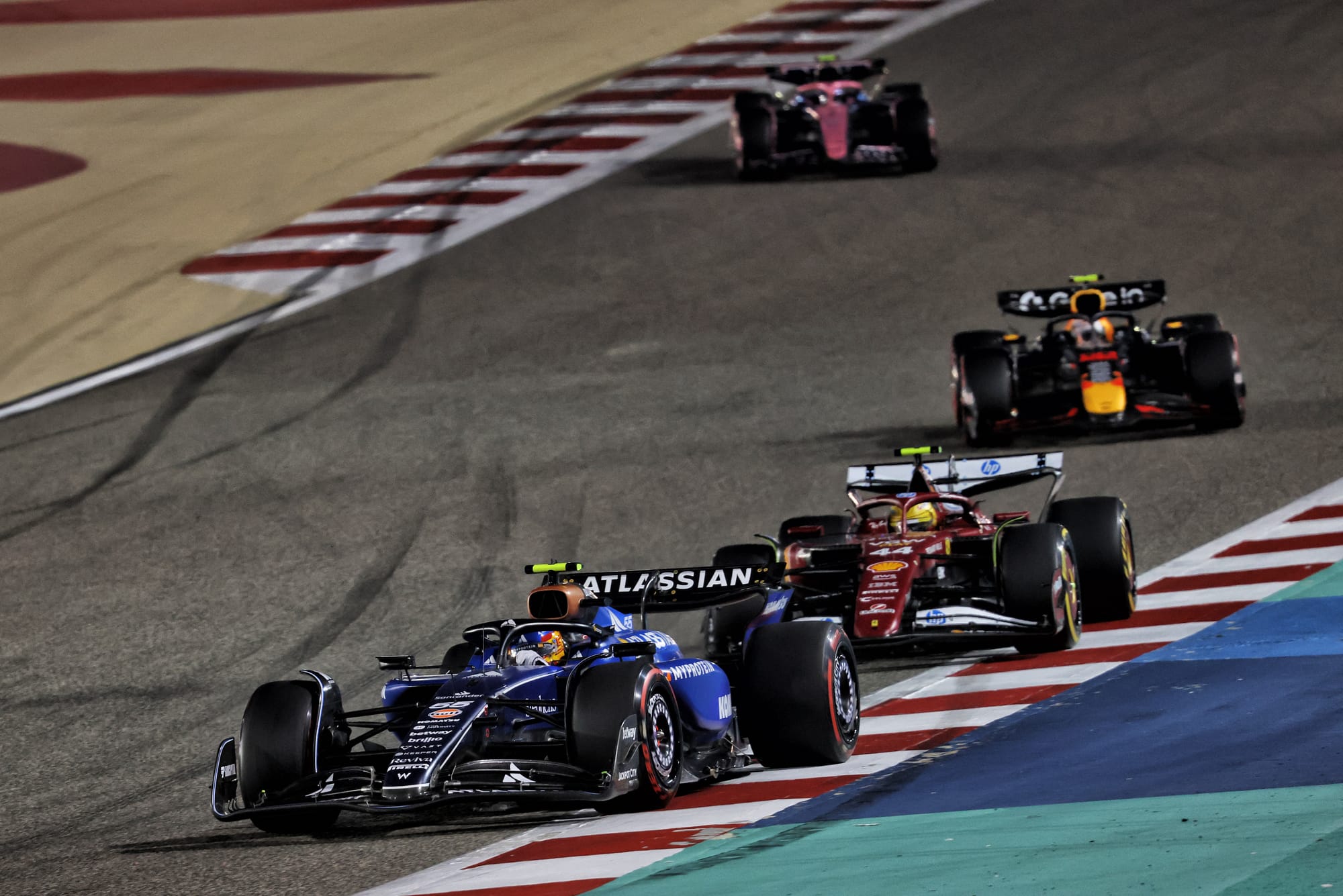
His experience of a top team and race-winning car means he has a different reference for how much it could be holding Williams back - while Sainz reckoned that as Albon is more in tune with Williams machinery, having driven all of its ground-effect cars to date, he is less sensitive to it.
“Alex also feels it, it's very obvious to both of us, I think it's just Alex is used to it because it's been part of the DNA for a long time, while for me, it's let's say a new issue,” said Sainz.
“With my arrival, if anything, it's become a bit more obvious and giving my feedback, we need to work on it.”
Albon had said in Bahrain last week that the car “has a DNA that we’re still trying to fix”, so he and Sainz “definitely speak the same language in terms of where the car needs to improve” even though there were “maybe not new comments for me, and from my experience of the car”.
This again indicates it is not something totally new to Williams, as did Albon’s claim the car “needs a certain set-up” that is “not always the most comfortable”.
But Albon did also say last weekend that what Sainz was used to could be very helpful in guiding where Williams needs to improve - which is consistent with what Sainz has observed and what Vowles said about understanding the extent of the limitation.
“These habits he’s learned are not necessarily bad habits from Ferrari,” said Albon.
“They’re good habits to have and it’s trying to see if we can use them in our car.
“At the minute there’s some corners that we can’t do and he has to maybe default to a different driving style that he’s used to.
“But inevitably, they’re going to make the car quicker, so as a team we’re very good at taking everything on board and understanding what he’s saying.
“It might be a difficult solution to fix for this year, but for next year we have priorities in certain areas to have a better car.”
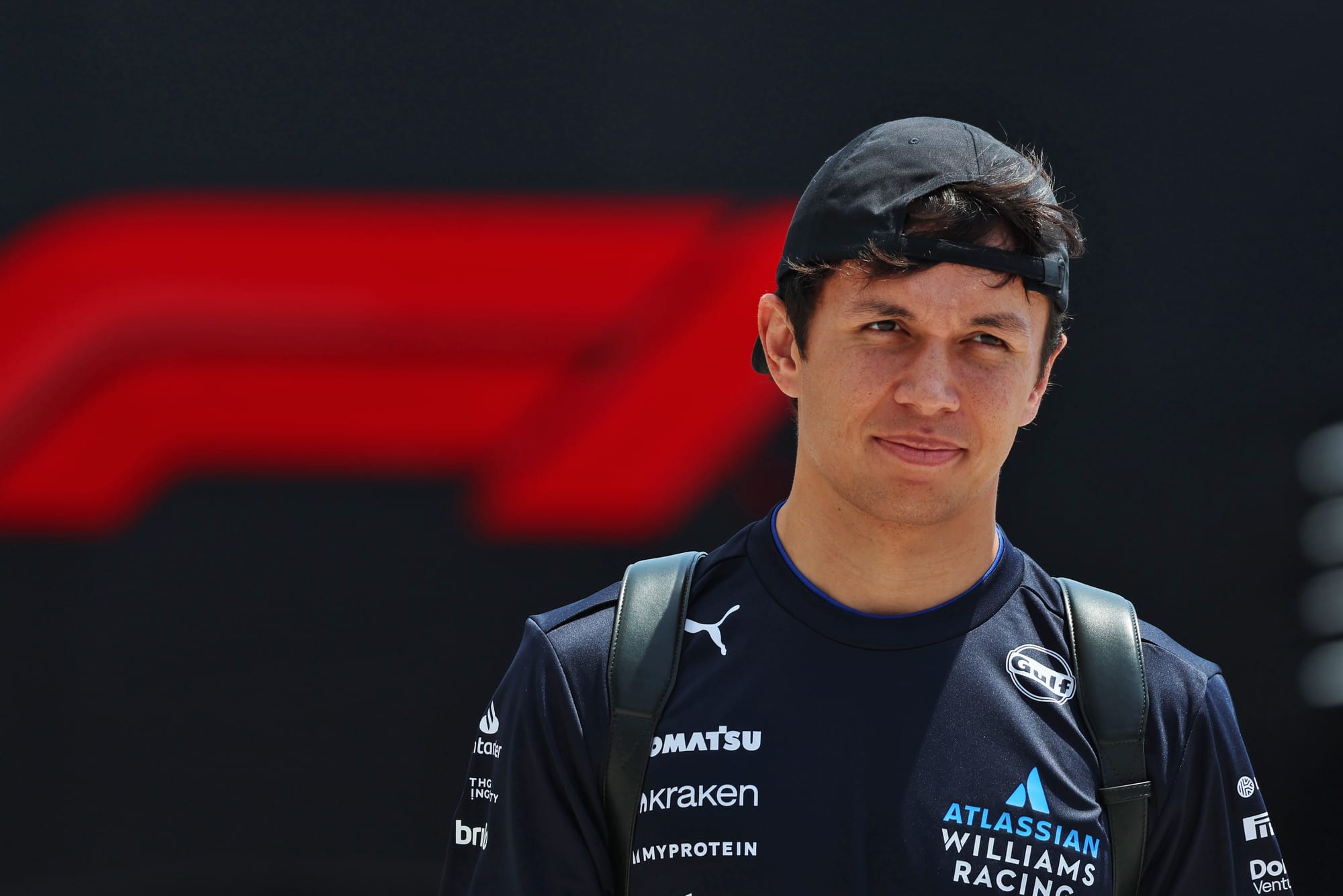
Albon also admitted in Saudi on Thursday that he has maybe become more “acceptant” of the limitation, which is better this season, but Sainz finding it clash with his preferred driving style has helped revive it as a focus.
“It's very corner-specific and it's wind-specific, and it can depend - there are some low-speed corners that we're actually very competitive at: China stands out to me - we were one of the quickest teams in the low-speed. So it's kind of a little bit at the mercy of the corner style and the track.
“Yes it is still there in the car, but less so. I think we've made some good steps and we've improved other areas of the car, in different corners, [that means] that car is now being brought together in a much better place and we don't need to sacrifice too much of other parts of the track to benefit the low-speed corner.
“But with Carlos joining, it's clear that he has a driving style that he wants to drive with the car and being totally honest, it's nothing new to what I feel.
I think what's really good though is his ideas and a fresh approach to it, a fresh mind, a different voice saying the similar things we're both very aligned on - on where the car needs to improve."

